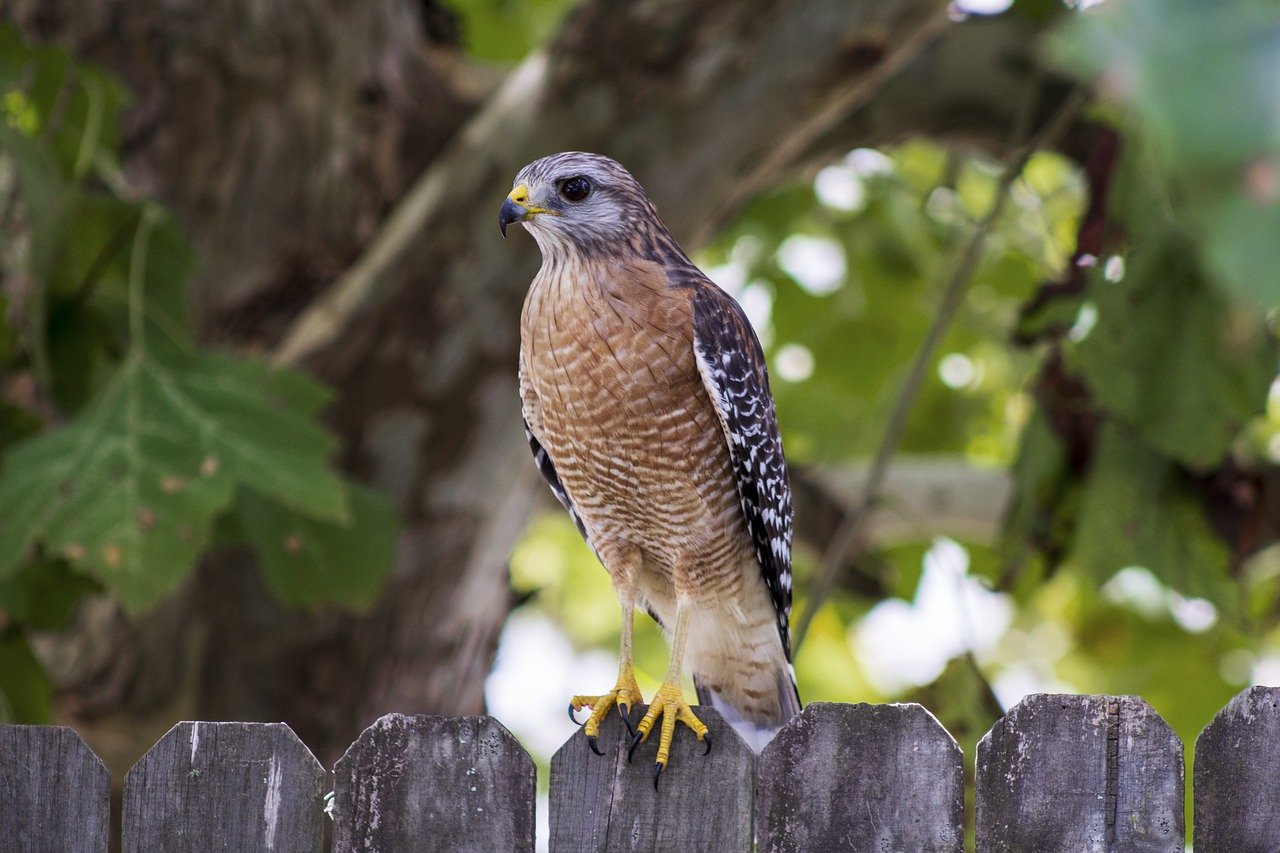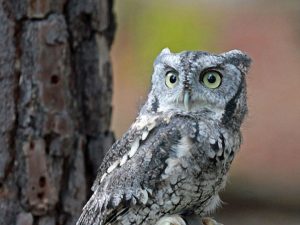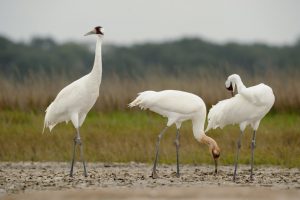As far as regional raptor diversity in Texas goes, central Texas is somewhere on the middle of the spectrum. There’s 3 really common species, plus about 5 others that are uncommon or migratory.
If you’re trying to figure out what kind of hawk you recently saw, here’s a huge tip: start by considering the more common species.
Hawks most commonly seen in Central Texas include:
Those first two are present year-round, with Red-tailed Hawk being the most noticeable and commonly seen.
Cooper’s Hawks are common October through April, but very uncommon during summer and early fall. They often attack smaller birds at backyard feeders.
Other common raptors not in the hawk family are Osprey, American Kestrel, and Crested Caracara.
Uncommon or Seasonal Hawks in Central Texas
Northern Harriers are grassland hunters and are only present in strong numbers during winter months. You won’t see them during summer.
Swainson’s and Broad-winged Hawks are migratory. They travel north during April, and south during September and October. If you see a bunch of hawks all sitting together on the ground in a bare dirt field, those are Swainson’s Hawks hunting for grasshoppers.
Sharp-shinned Hawks look nearly identical to Cooper’s Hawks, but are somewhat less common. Usually only more experienced birders can tell them apart with confidence. One tip is look at the tail – Cooper’s Hawks have a curved tail tip, making the shape of “C” for “Cooper’s”. Sharp-shinned Hawk tail tips are straight across, like someone with scissors snipped the feathers in a straight line.
Think You Know What You Saw? Test You Guess Below.
Red-tailed Hawk
- Red tail feathers are only sometimes visible.
- Dark splotchy belly band across midsection
- Light splotchy shoulder patches on backside.
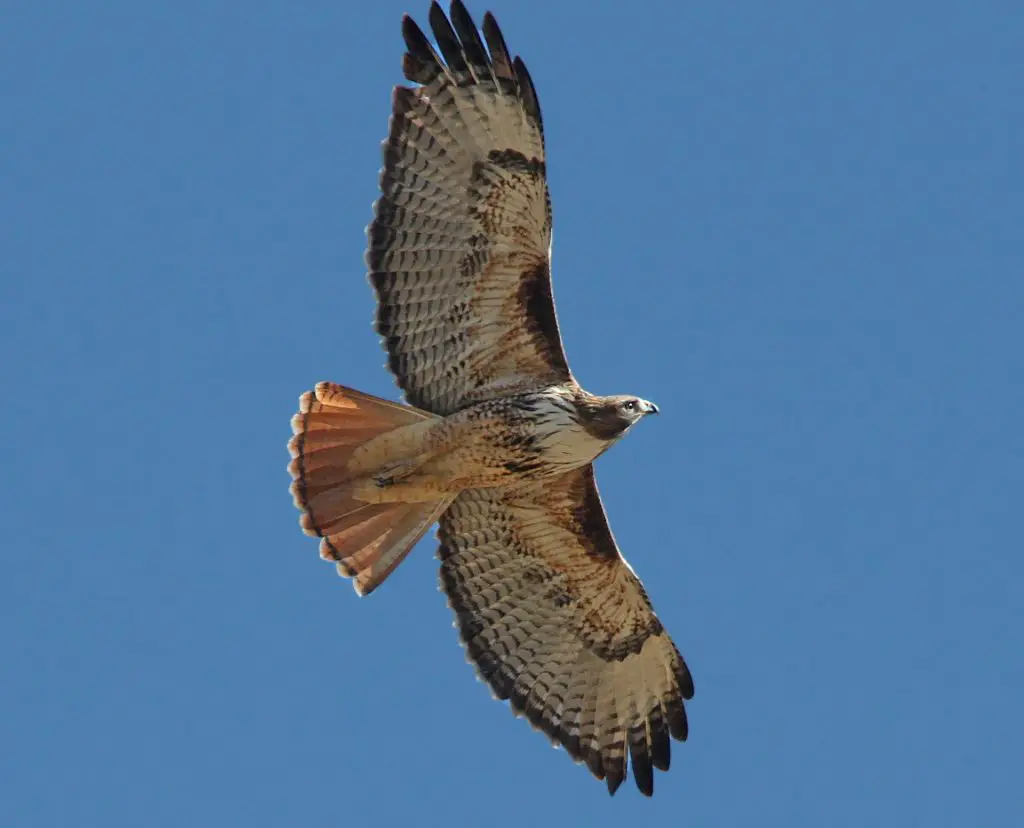
This is one of the largest hawk species in Texas, and also one of the most common. Often perched atop a telephone pole or bare tree, they’re a common sight along agricultural fields and open grassy areas. But they can also be seen perched on large road signs above busy highways.
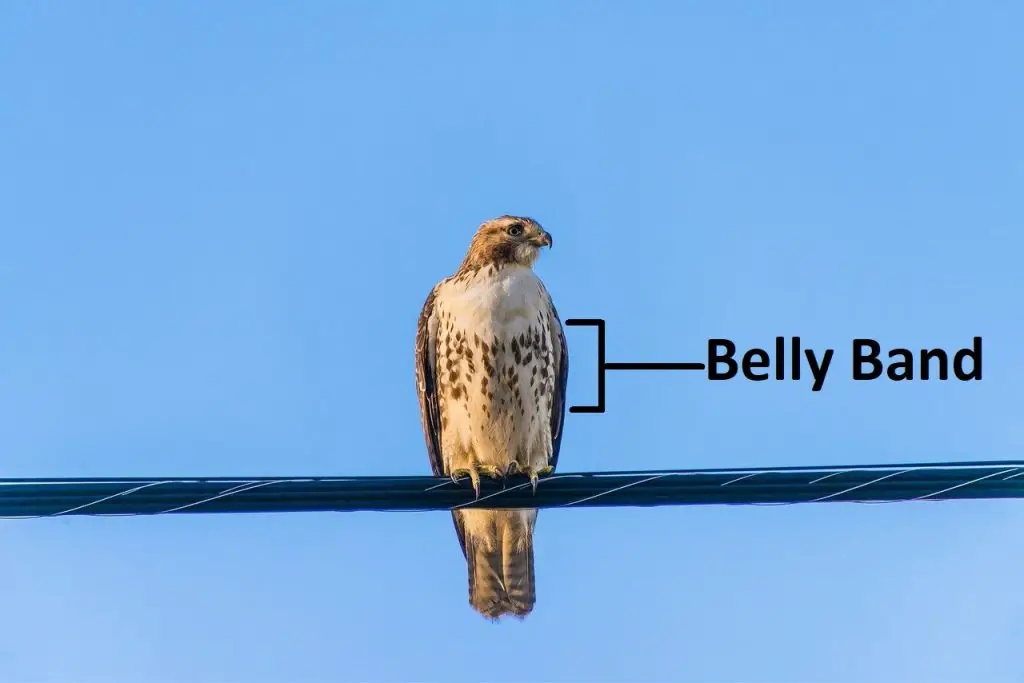
Adults have red tail feathers, but young hawks won’t show color yet. If you can’t see color in the tail then look at the belly (midsection), or look for splotchy white shoulder patches on the back. These features confirm Red-tailed Hawk.
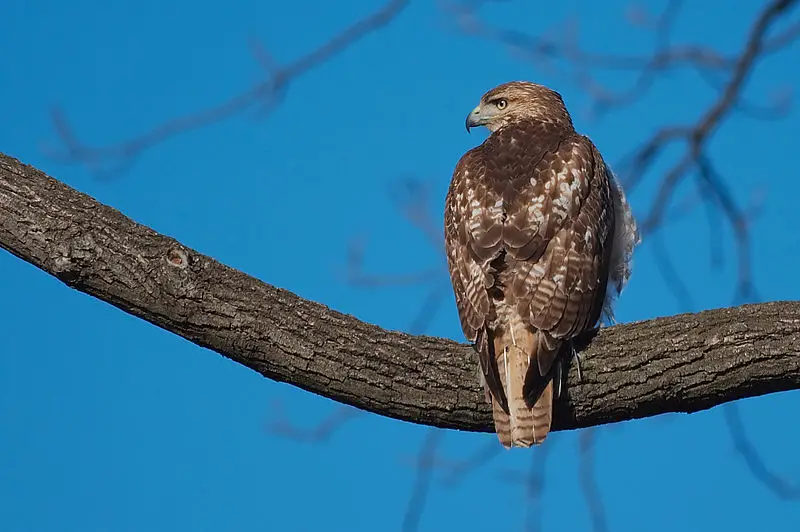
Red-shouldered Hawk
- Woodland species, loves large trees.
- Orange barring across breast and belly.
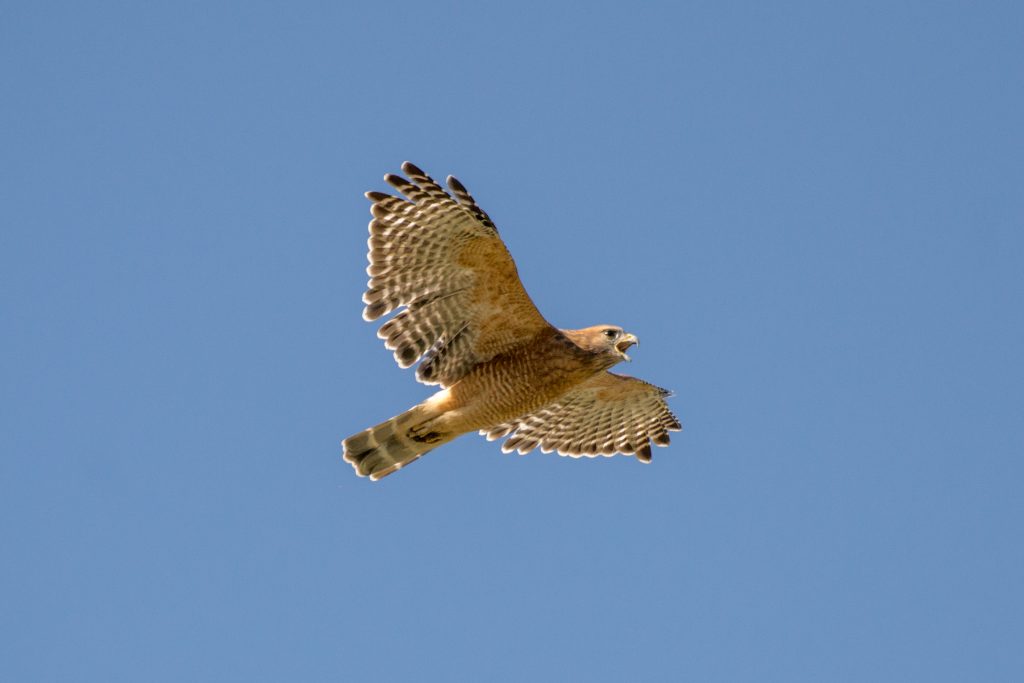
Red-shouldered Hawks are woodland hunters. Diving down from within large trees, they pounce on rodents, snakes, and insects below in the grass, and then quickly fly back to a nearby tree for cover.
This mid-sized hawk is often seen in local parks, and wooded stretches along creeks and rivers. They’re common in the eastern half of Austin and San Antonio, but are localized to patches of Live Oaks and Pecans on the western sides. They don’t particularly like Ashe Juniper (Cedar), so the more juniper you see the less likely a Red-shouldered Hawk is around.
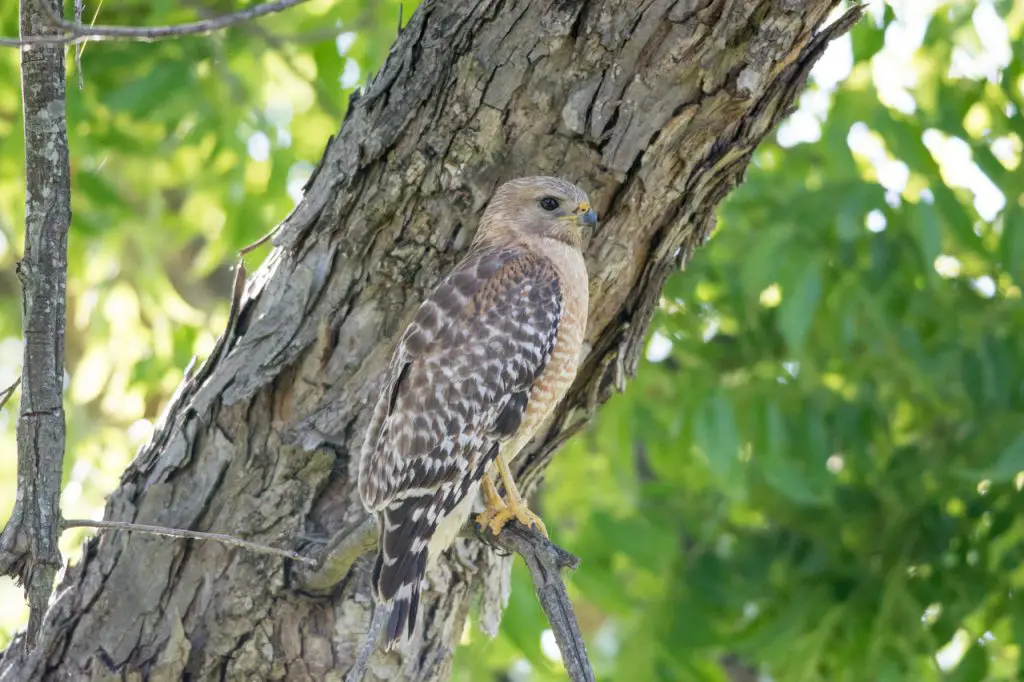
You also won’t see Red-shoulders out in open fields. But they are seen in neighborhoods that have plenty of large trees like Pecan, Oak, and Sycamore. If there’s a large tree in your yard, a Red-shouldered Hawk may perch in it at some point.
Cooper’s Hawk
- Slim, fast moving hawk.
- Often attacks backyard feeder birds.
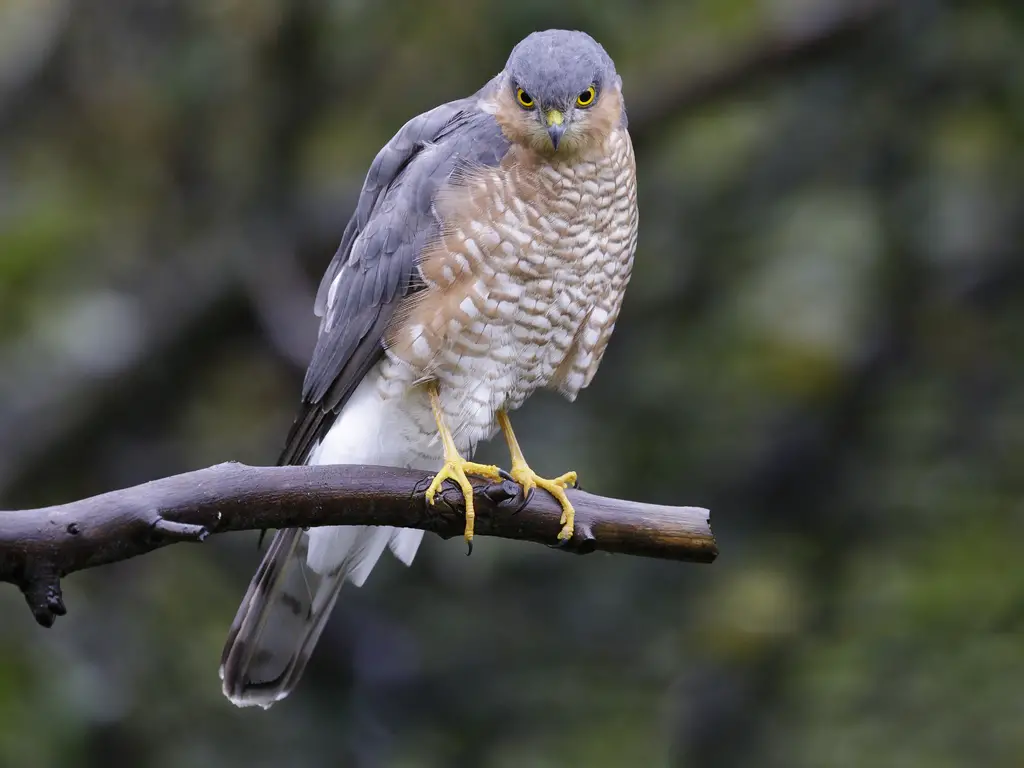
Cooper’s Hawks are slender, fast moving raptors that mainly prey on smaller birds. If you have an active bird feeder in your yard, chances are at some point during a winter season you’ve had a hawk dive on your cardinals, doves, and sparrows. There’s a 99.9% chance that was a Cooper’s Hawk.
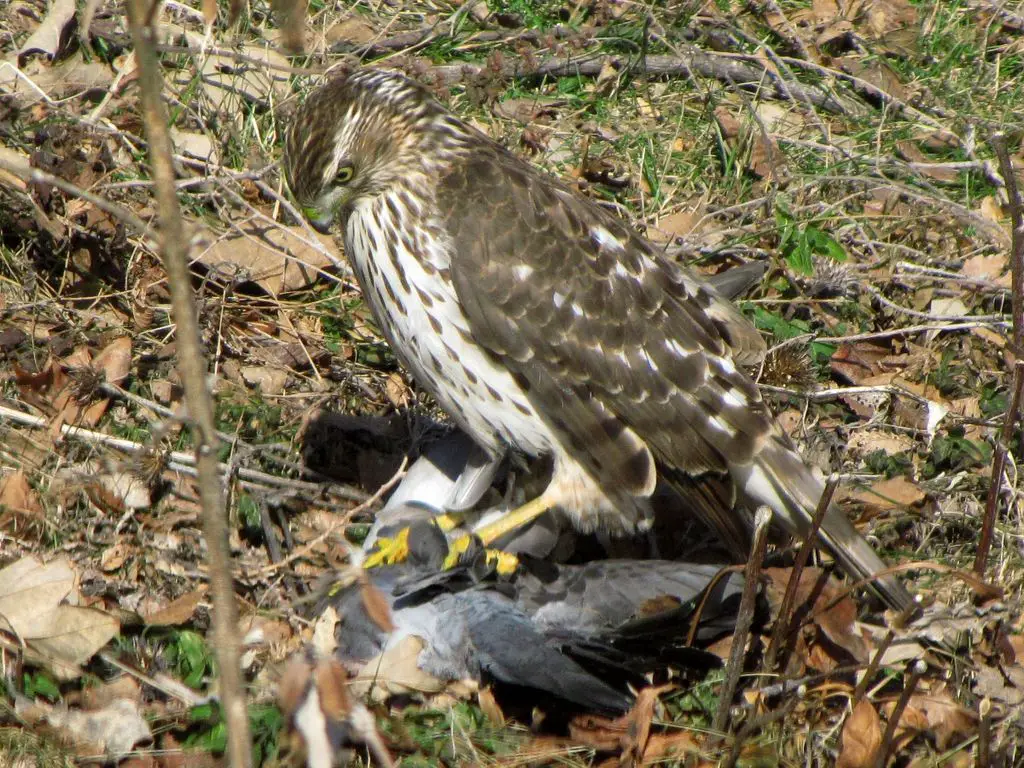
Although they can look similar in appearance to Red-shouldered Hawks, their bodies are more slim, rather than chunky and round. Cooper’s Hawks will also perch in more dense vegetation. They’re almost always silent, while Red-shouldered Hawks can be very vocal at times.
Northern Harrier
- Flies very low over open grassy fields.
- White rump at top of tail/lower back.
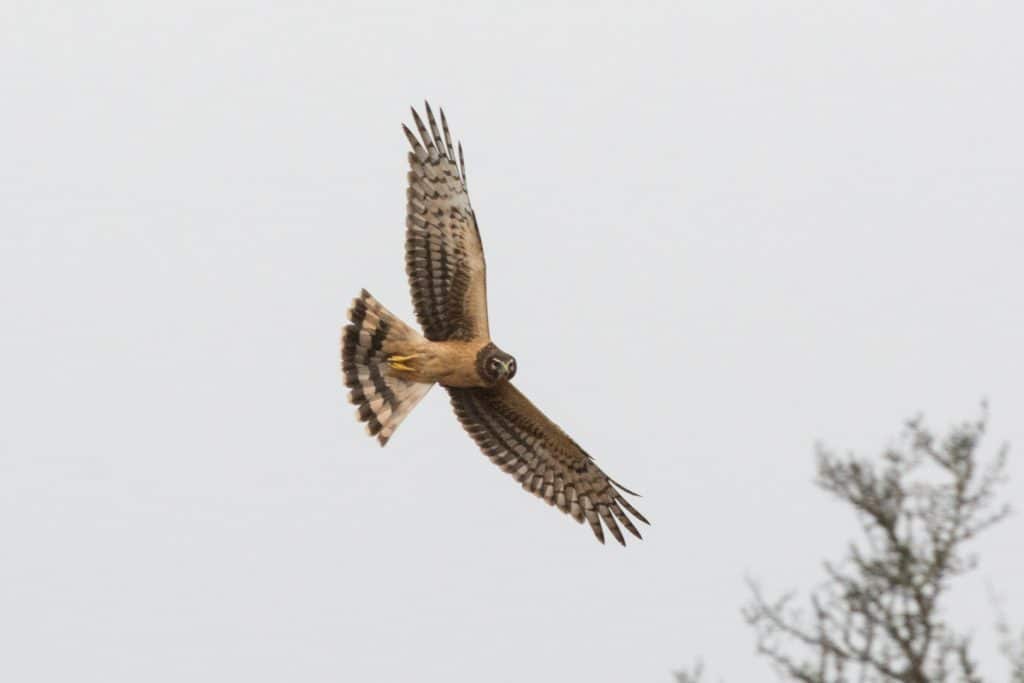
Northern Harriers are very different from other Texas hawks in their hunting style and behavior. Like an owl, they hunt primarily by sound, although their eyesight is quite good as well. To hear rodents hiding in the grass, Harriers will fly very low to the ground and glide back and forth.
Aside from flying low over open grasslands, another way to identify this species is by seeing the bright white rump, located where the tail feathers connect to the lower back. No other hawk in central Texas has a white rump.
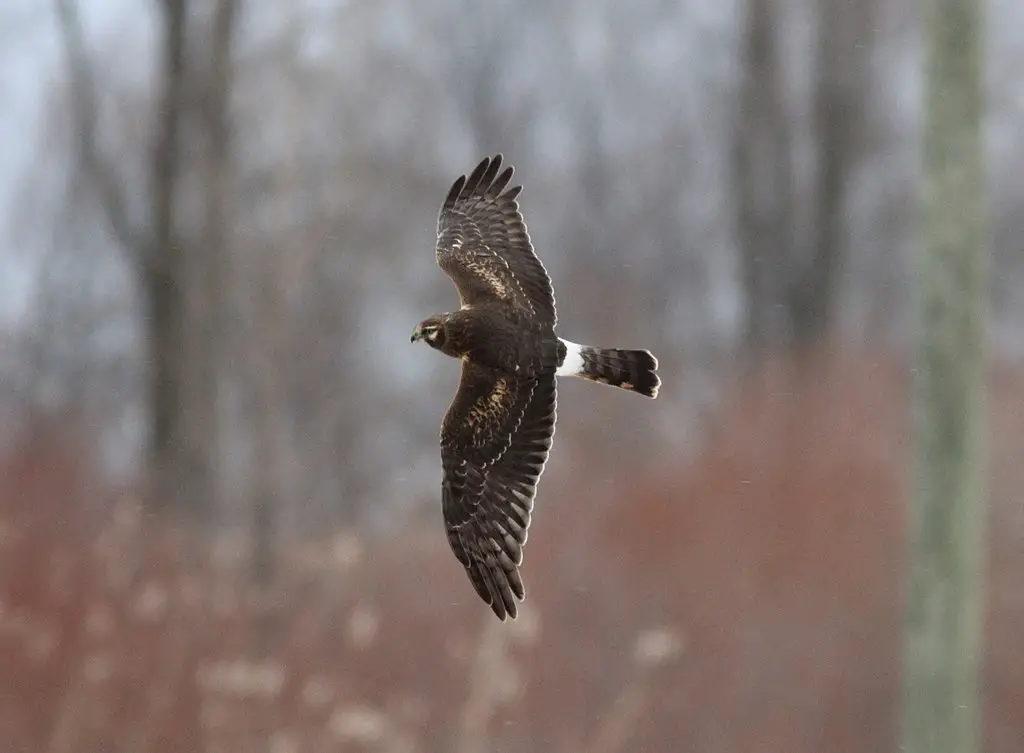
This species is dimorphic, meaning the males and females look different. Females are more numerous, and are a medium brown. Males are a ghostly gray color.
Northern Harriers are nearly always seen on the outskirts of town or in rural areas. You won’t get them in dense city areas.
Swainson’s Hawk
- Only common during spring and fall migration.
- Dark head and breast, light chin and belly.
- Light leading edge of wing, dark trailing edge of wing.
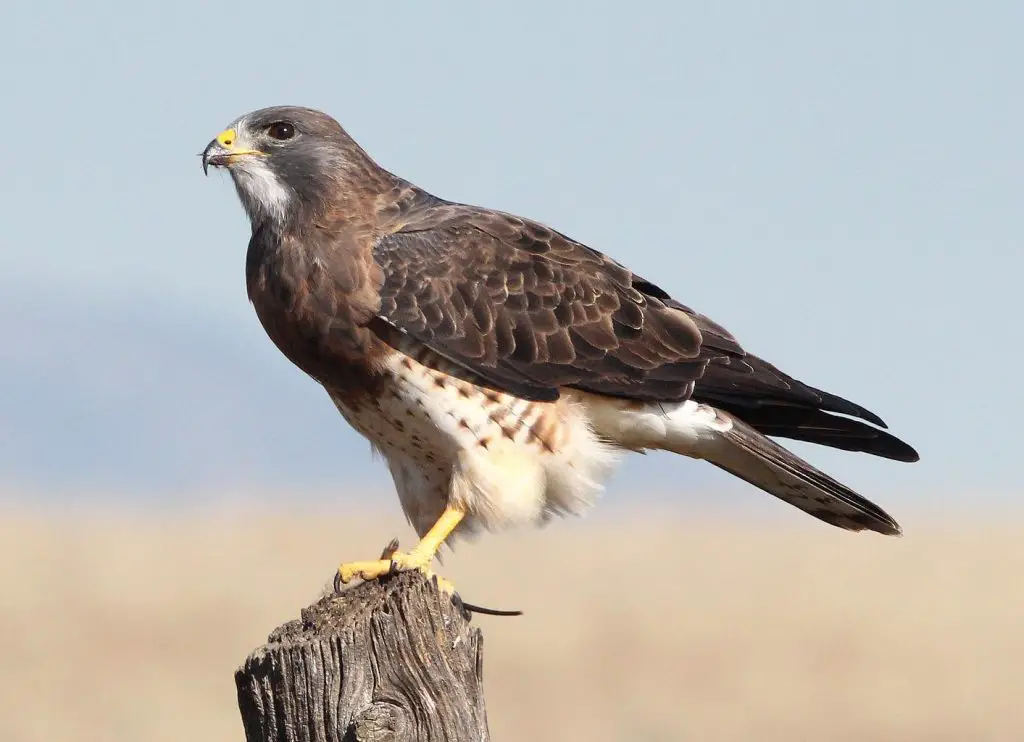
If it’s April, September, or October, and you see a large hawk, it may be a Swainson’s. Technically they’re present in low numbers during the summer, but they’re very unusual outside of migration periods.
To identify a Swainson’s Hawk look for two features: the white throat against a dark brown breast, and the dark trailing edge of the wings.
If the hawk is perched and you get a good look, the dark head and breast will stand out against the light belly. The light chin just under the beak should also be visible.
If the hawk is flying overhead, look at the color under the wings. The front, or leading edge, should be light in color. The back half of the wing, along the trailing edge, will be dark. This wing color pattern is a strong indicator of Swainson’s Hawk.
Broad-winged Hawk
Only common during spring and fall migration.
- Short wings
- Dark wing outline at tips and trailing edge
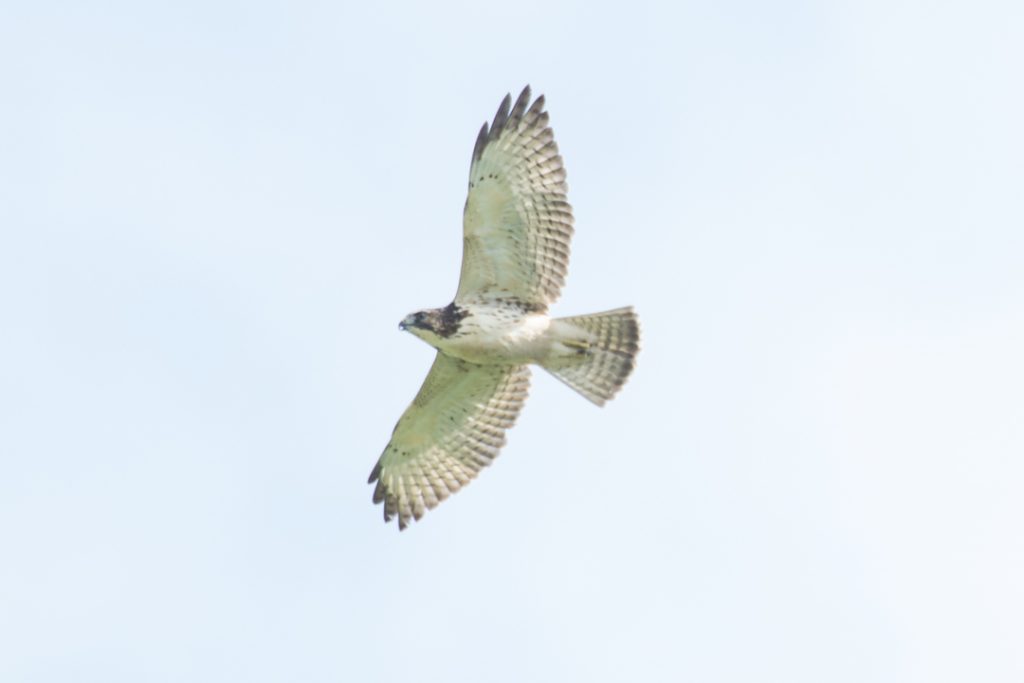
Here’s another migratory hawk that shows up at the same time as Swainson’s Hawks. They are challenging to identify for beginners because there’s no single clear physical trait to look at for confirmation.
Likely the best thing to look for is the thin, dark outline of the wing during flight. From the outer tips, down the trailing (rear) edge of the wing, dark brown feathers contrast against otherwise light underwing feathers.
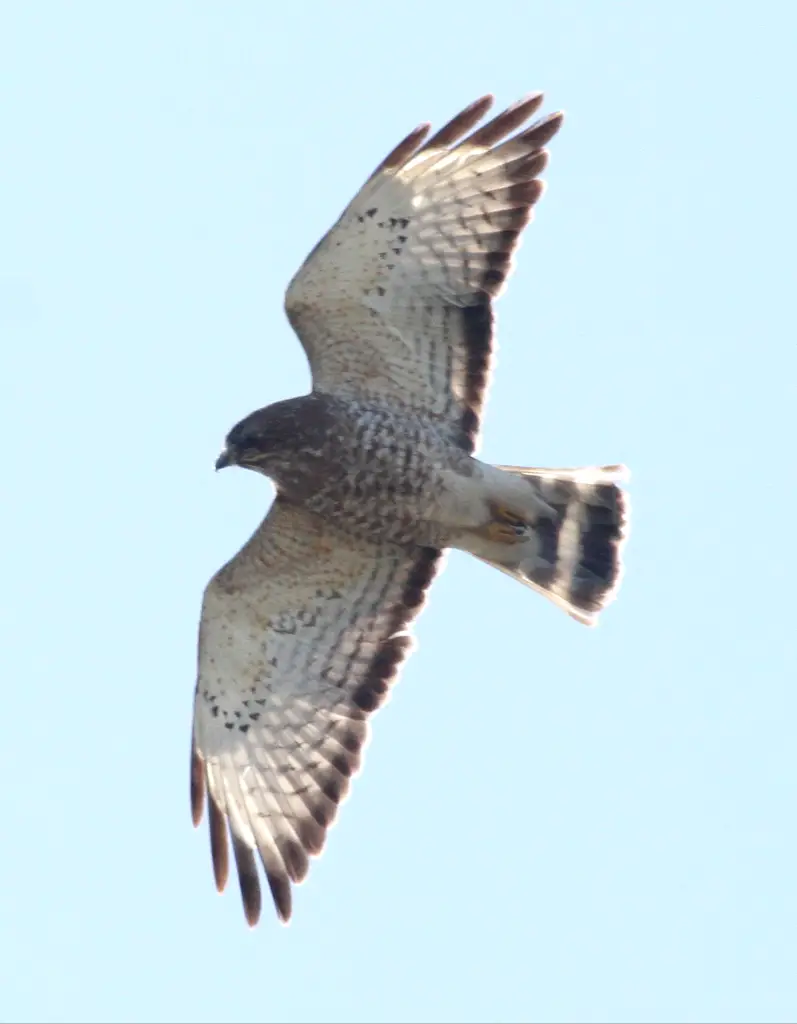
Adults will show messy orange barring across the chest, but younger birds just have messy dark streaks with no color.
Broad-winged Hawks can put on huge spectacles during fall migration when they congregate by the thousands and slowly pass overhead, soaring high up and heading south in one huge group.
Sharp-shinned Hawk
- Nearly identical to Cooper’s Hawk
- Straight edge of tail
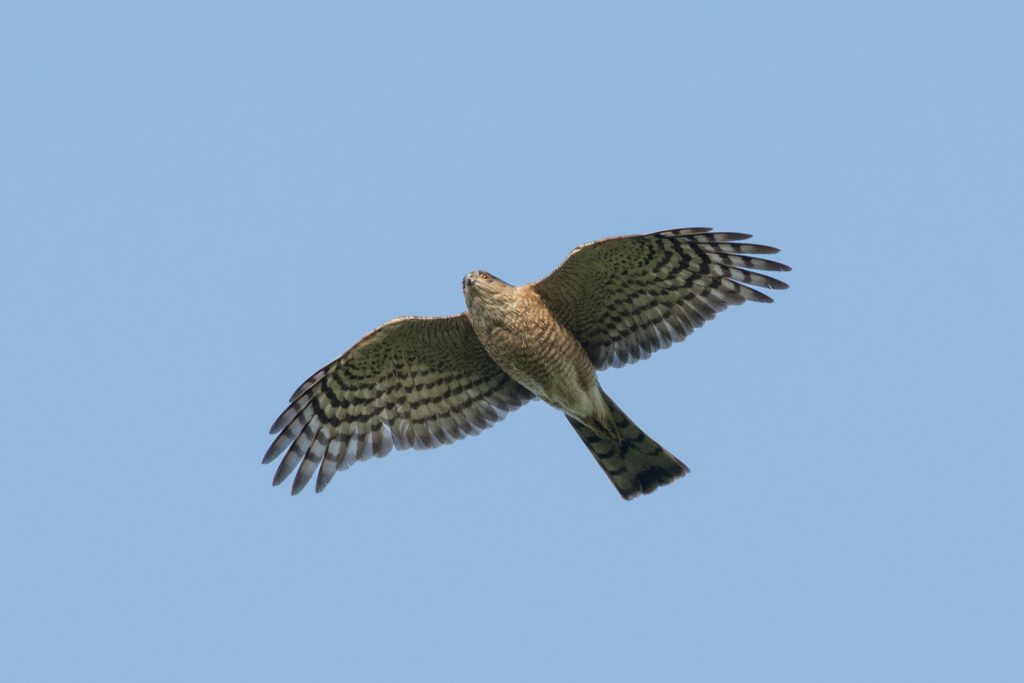
Sharp-shinned Hawks are somewhere right between common and uncommon in central Texas, although only present from late fall to spring. They’re closely related to Cooper’s Hawks and look nearly identical. Separating them with confidence is usually considered an advanced skill in the bird watching community.
Like Cooper’s Hawks, Sharp-shinned Hawks primarily hunt smaller birds. These small hawks fly low and fast in an attempt to surprise their prey. They may dive on your bird feeders in an attempt to grab an easy meal.
One clue to identify them is the flat, straight edge of the tail feathers. Cooper’s Hawks will instead show shorter edge tail feathers with longer middle tail feathers. This creates a curve or “C” shape. C for Cooper’s. Sharp-shinned Hawks have uniform length tail feathers, creating a straight edge.
Zone-tailed Hawk
- All dark with white tail band
- Looks very similar to Turkey Vulture in flight
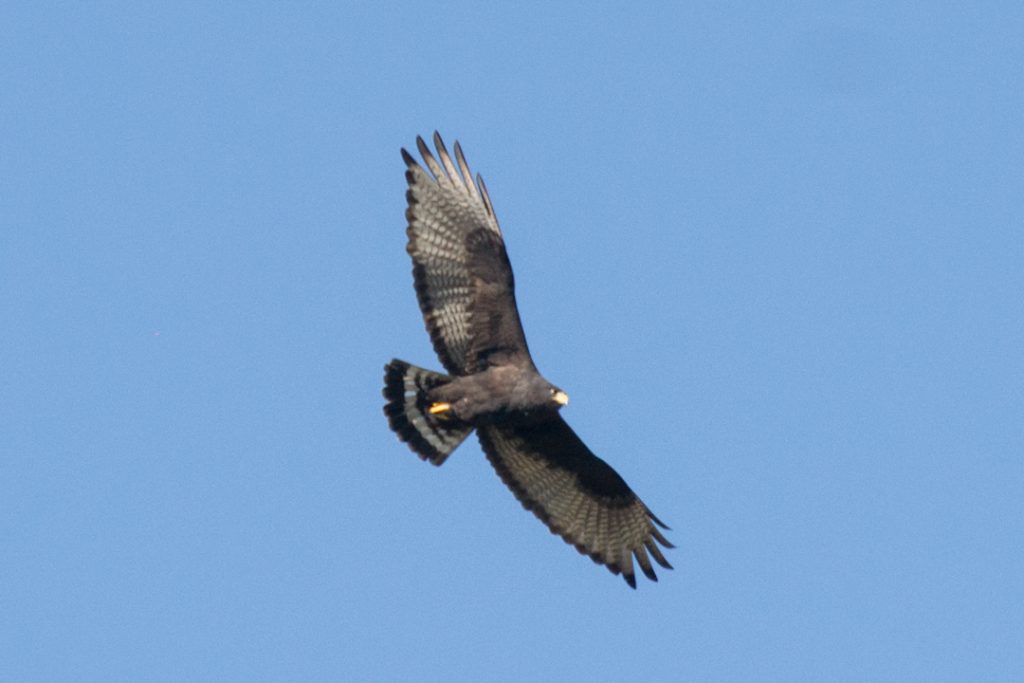
Zone-tailed Hawks are always present in the Texas Hill Country, but in very low numbers. Luck is always required to find one, unless a known nesting location is nearby.
These hawks are all dark, except for a white band across the tail. If you get a good look then you’ll also see the yellow beak and legs, but typically you’ll just notice an all dark bird soaring.
The challenge here is that Turkey Vultures are also an all dark bird in central Texas commonly seen soaring overhead. For every several hundred Turkey Vultures in an area there may be one Zone-tailed Hawk.
To separate from vultures, look closely at the tail. A white band will give away the hawk, although it’s more difficult to see than most would guess. Yellow legs and beak are just as much of a giveaway, but usually difficult to see at a distance.
More Texas Hawk Species
Wondering what other hawks species live in Texas? Check out our guide on Texas Hawk and How to Tell Them Apart.

